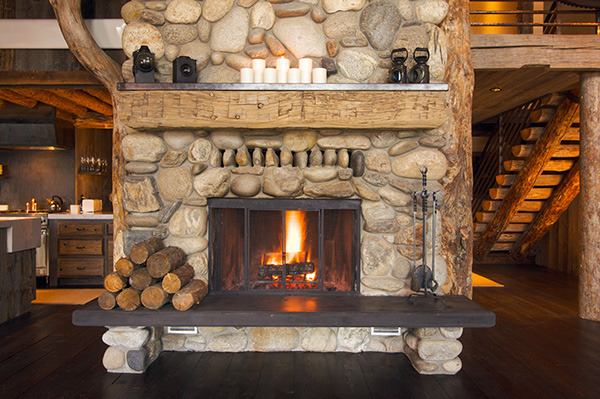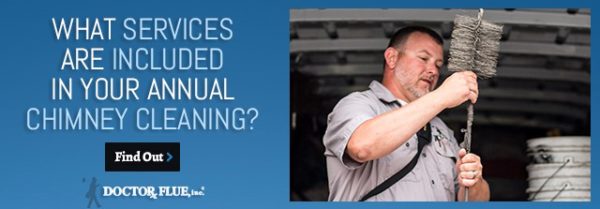
Fireplaces seem simple but lighting a fireplace can sometimes be a challenge. Between unusual drafts and wood that just won’t catch fire, you want to understand the right way to safely light a fire. If you’re looking for some relief from the cold, read on and learn tips for safely using and lighting your fireplace.
Always Check the Damper
Your chimney damper is a plate or a door that can be opened or closed to prevent unwanted airflow coming down into your home. While you want to close it when your fireplace isn’t being used, it needs to be open before you start a fire.
If you accidentally leave your damper closed, you’ll quickly find out when the smoke from your fire begins to vent back into your home. It’s uncomfortable – but more importantly, it’s dangerous.
Simply check that the lever or mechanism on your damper is in the open position before you get started. If you hear unusual noises, like animals or leaves when you open it, look for obstructions. You don’t want your damper to only open partially.
Priming the Flue
Opening the damper isn’t the only step to avoid a puffback of smoke. Cold air is heavy, and if you’re lighting a fire, chances are it is cold outside!
The cold air that is being stopped by your damper will press down and cause a draft to blow down the flue and into your home. The best way to reverse a draft is by priming the flue.
Take a rolled-up newspaper or similar object that’s safe to burn and hold. Ignite the end and hold it up into the flue for a minute or two. You should notice the draft reverse directions and the smoke will begin to go up and out of the chimney.
Help – The Draft Won’t Go Up the Flue!
Chimneys occasionally experience draft problems that can leave you perplexed. If you’ve tried priming the flue to reverse the flow without success, you could be having issues due to the pressure in your home.
Try opening up a window nearby to alter the flow and break the “stack effect” in your chimney.
Use Seasoned Wood
If you’re having trouble lighting a fireplace, it could be the firewood! Fresh logs with high moisture content won’t burn well. Green wood like pine will produce a lot more smoke than you want. The smoke increases the creosote buildup in your chimney, which can lead to chimney fires.
When choosing wood for your fireplace, stick to these rules:
Use dense wood – Dense hardwoods, such as maple or oak, will burn longer and produce more heat than soft woods. They also leave behind a bed of coals that can help retain heat longer for those looking to zone-heat their homes.
Allow wood to season for a few months – Properly seasoned wood requires storage for months in a dry area that allows for airflow but is protected from rainfall. Wood is fibrous and can hold onto moisture for a long time, restricting its ability to ignite or burn continuously.
Keep it local – While it won’t impact your fire, using wood foreign to your area contributes to the transportation of invasive species that can impact your nearby ecosystem. The best practice for firewood is to buy it where you burn it.
Keep the Fire Small
A fireplace doesn’t need to be roaring to provide heat and comfort to your family. When you’re lighting your fireplace, don’t overload the firebox with too much wood and never use accelerants.
Small fires are easy to control. They produce less smoke and therefore lower amounts of creosote. They’ll still generate plenty of heat nearby and can be maintained for much longer without exhausting your season’s supply of wood.
You’ll also be able to put the fire out easier when you’re ready to go to bed.
Keep the Mesh Closed
After lighting a fire, remember to keep the protective screen closed. Even small fires can spark and put your home at risk for a fire. Mesh screens or fireplace guards are designed to prevent dangerous accidents.
No guard is foolproof. Even with the mesh closed, you need to keep an eye on your fire. Never leave it unattended.
Having Trouble Lighting Your Fireplace? – Call Doctor Flue!
The earlier you identify a problem with your chimney, the better! Contact us today to schedule an inspection to help keep your home safe and your fireplace ready for winter.
Call Us: 1-800-438-3583
Email Us: office@drflue.com
Office Hours: Mon-Fri: 8am-4pm
Connect with Doctor Flue on Social Media

